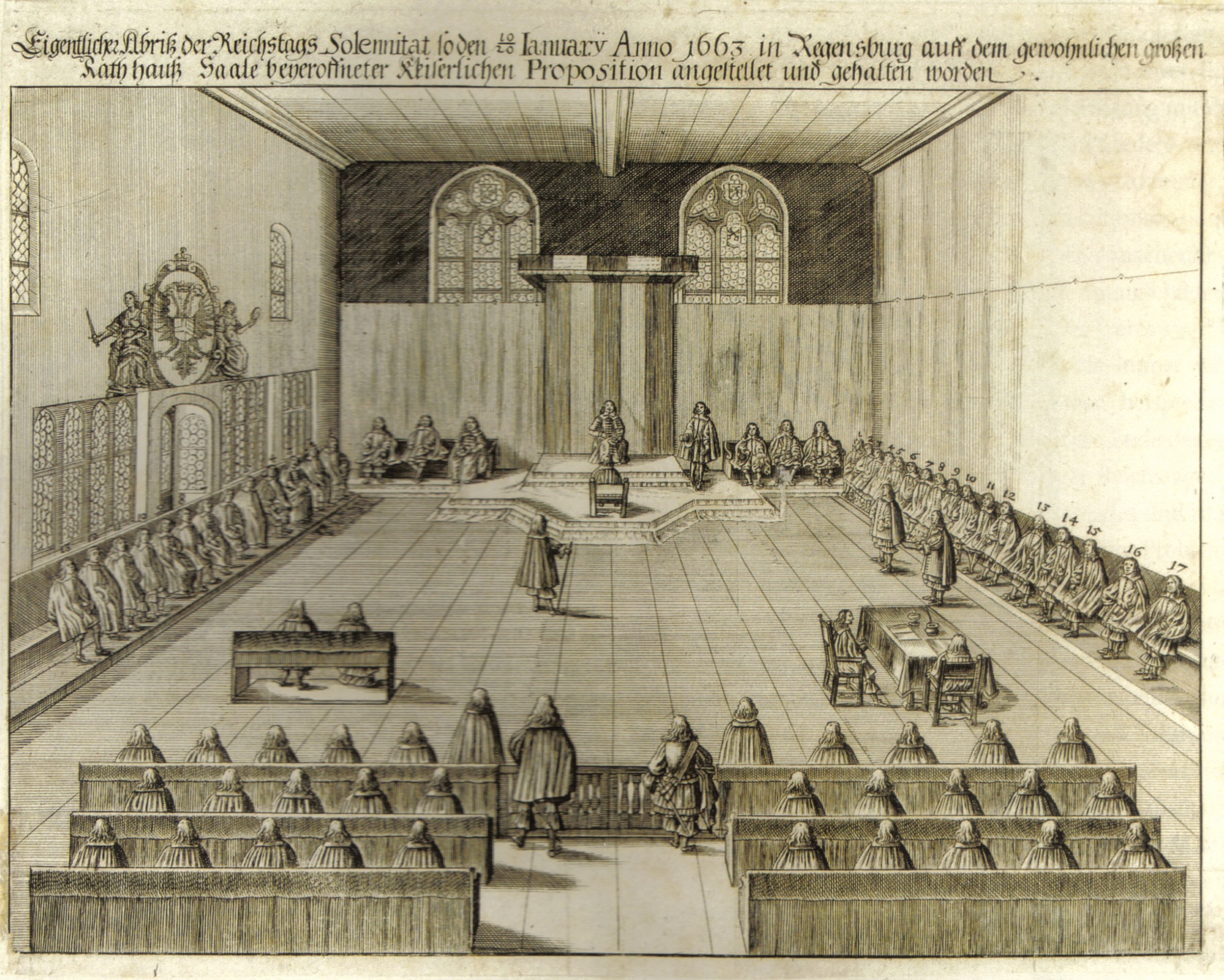Perpetual Diet on:
[Wikipedia]
[Google]
[Amazon]

 The Perpetual Diet of Regensburg or the Eternal Diet of Regensburg, (german: Immerwährender Reichstag) also commonly called in English the perpetual Diet of Ratisbon,Jean Berenger, C.A. Simpson, ''The Habsburg Empire 1700-1918'' (2014), p. 134 from the city’s
The Perpetual Diet of Regensburg or the Eternal Diet of Regensburg, (german: Immerwährender Reichstag) also commonly called in English the perpetual Diet of Ratisbon,Jean Berenger, C.A. Simpson, ''The Habsburg Empire 1700-1918'' (2014), p. 134 from the city’s

 The Perpetual Diet of Regensburg or the Eternal Diet of Regensburg, (german: Immerwährender Reichstag) also commonly called in English the perpetual Diet of Ratisbon,Jean Berenger, C.A. Simpson, ''The Habsburg Empire 1700-1918'' (2014), p. 134 from the city’s
The Perpetual Diet of Regensburg or the Eternal Diet of Regensburg, (german: Immerwährender Reichstag) also commonly called in English the perpetual Diet of Ratisbon,Jean Berenger, C.A. Simpson, ''The Habsburg Empire 1700-1918'' (2014), p. 134 from the city’s Latin
Latin (, or , ) is a classical language belonging to the Italic branch of the Indo-European languages. Latin was originally a dialect spoken in the lower Tiber area (then known as Latium) around present-day Rome, but through the power ...
name, was a session of the Imperial Diet (''Reichstag'') of the Holy Roman Empire
The Holy Roman Empire was a political entity in Western, Central, and Southern Europe that developed during the Early Middle Ages and continued until its dissolution in 1806 during the Napoleonic Wars.
From the accession of Otto I in 962 ...
that sat continuously from 1663 to 1806 in Regensburg in present-day Bavaria
Bavaria ( ; ), officially the Free State of Bavaria (german: Freistaat Bayern, link=no ), is a state in the south-east of Germany. With an area of , Bavaria is the largest German state by land area, comprising roughly a fifth of the total l ...
, Germany
Germany, officially the Federal Republic of Germany (FRG),, is a country in Central Europe. It is the most populous member state of the European Union. Germany lies between the Baltic and North Sea to the north and the Alps to the sou ...
.
__NOTOC__
Previously, the Diet had been convened in different cities but, beginning in 1594, it met only in the town hall in Regensburg. On 20 January 1663, the Diet convened to deal with threats from the Ottoman Empire
The Ottoman Empire, * ; is an archaic version. The definite article forms and were synonymous * and el, Оθωμανική Αυτοκρατορία, Othōmanikē Avtokratoria, label=none * info page on book at Martin Luther University) ...
(the Turkish Question). Since the Peace of Westphalia
The Peace of Westphalia (german: Westfälischer Friede, ) is the collective name for two peace treaties signed in October 1648 in the Westphalian cities of Osnabrück and Münster. They ended the Thirty Years' War (1618–1648) and brought pe ...
in 1648, the Holy Roman Emperor had been formally bound to accept all decisions made by the Diet. Hence, out of fear that the Emperor would disregard the Diet's role by not calling sessions, it never dissolved and became a perpetual diet. Therefore, no final report of its decisions, known as a Recess, could be issued, and that of the preceding diet, issued in 1654, was dubbed the . From 1663 until the 1684 Truce of Ratisbon (a former name of Regensburg in English), the diet gradually developed into a permanent body.
In addition to envoys who represented the Imperial Estates in the Diet, Regensburg had around 70 representatives (''Komitialgesandtern'' or ''Comitia'') from foreign states. The Emperor was represented by a Principal Commissioner (''Prinzipalkommissar''), a position that accrued to the Thurn und Taxis family from 1748.
In its early years, the Perpetual Diet was a tool for consolidation of Habsburg power in the empire. However, by the middle of the 18th century, it was largely "dysfunctional" and a "mere congress of diplomats" that produced "no important legislation in political and constitutional matters". The weak institution has been called "a bladeless knife without a handle", and, during the Diet's existence, the Empire increasingly became nothing more than a collection of largely independent states.
The last action of the Diet, on 25 March 1803, was the passage of the German Mediatisation, which reorganized and secularized the Empire. Following the approval of that final constitutional document, the Diet never met again and its existence ended with the dissolution of the Empire in 1806.
List of imperial principal commissioners
See also
* List of Reichstag participants (1792)Notes
References
External links
* {{Authority control Regensburg Regensburg 17th century in the Holy Roman Empire 18th century in the Holy Roman Empire 1663 establishments in the Holy Roman Empire 1806 disestablishments in the Holy Roman Empire